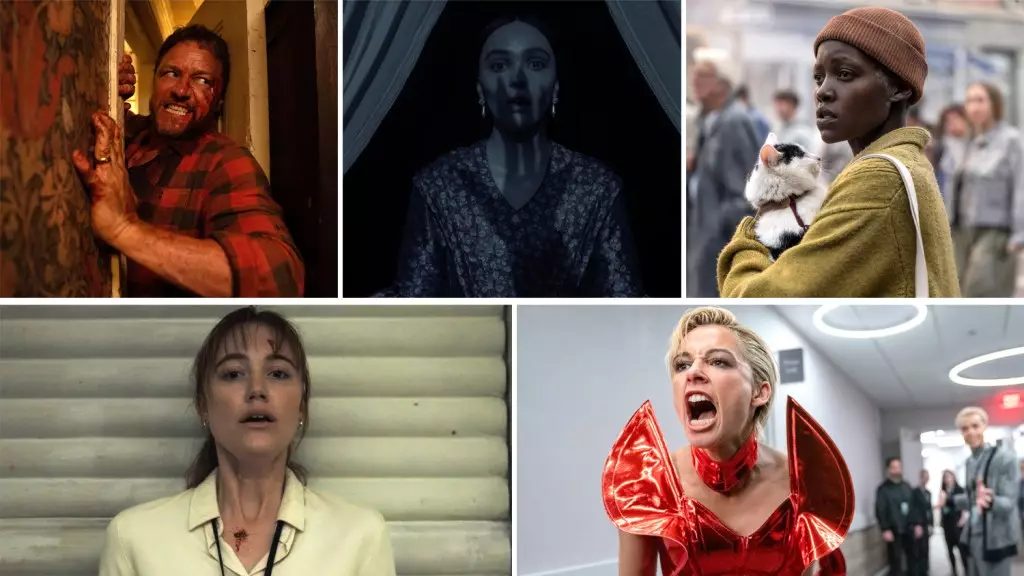As the cinematic landscape forges ahead, the unyielding force of box office success is measured not just at the ticket counters but through the elusive metrics of post-launch profitability. This is particularly true of the latest Deadline’s Most Valuable Blockbuster tournament, which has thrown a real spotlight on the evolving nature of film revenue in the age of streaming. A movie’s earnings don’t cease once the final credits roll; they often blossom into ancillary revenues, from streaming deals to international markets. The year 2024 stands as a testament to this reality, showcasing an astounding $336 million in net profits raked in by the top five films alone, with horror at the forefront of this financial bonanza.
With major players like Disney, Paramount, and Universal traditionally scaling successes through pioneering marketing campaigns and diverse distribution strategies, the newfound prominence of horror films in profitability raises critical questions about genre evolution, audience engagement, and the industry’s future. Let’s delve into how these unique films are not only captivating audiences but also reaping significant financial rewards.
A Quiet Place: Day One—Breaking Records and Expectations
Leading the charge is Paramount’s “A Quiet Place: Day One,” a splendid entry that managed to net an impressive $83.6 million. The film’s prequel strategy, a rarity in horror franchises, unfolded a new narrative layer in an already established universe. Director Michael Sarnoski brought fresh talent to the table with actors like Lupita Nyong’o and Joseph Quinn. The marketing was astutely crafted, enabling the film to garner a staggering $52.2 million on its opening weekend, proving that even a change in cast does little to dampen a franchise’s allure.
In an age where familiar faces often dominate the silver screen, the success of “A Quiet Place: Day One” suggests there’s a treasurable depth in storytelling. The film’s monumental success underscores that originality paves the way for profitability, pushing viewers to engage deeply with the emotional repercussions of a world besieged by alien horrors.
Nosferatu: Rediscovering Genre Artistry
Next on our list is the intriguing “Nosferatu,” a period horror film from Focus Features that amazed viewers and critics alike, culminating in a net profit of $70 million. Despite the high stakes often associated with period pieces—from mixed audience reception to artistic authenticity—the film’s modern interpretation of Dracula proved to evoke both classic fear and contemporary charm. Director Robert Eggers, known for his ability to bring grit to his films, effortlessly bridges the gap between horror aficionados and casual viewers, crafting an immersive experience that resonates beyond mere fright.
The marketing campaign for “Nosferatu” was a masterstroke, evoking intrigue with a simple yet haunting tagline: “He is coming!” By revealing minimal details and showcasing haunting visuals, Focus Features was able to capture the imagination of audiences, resulting in 65 million trailer views—an impressive figure that speaks volumes about modern promo strategies. Here, the fusion of nostalgia and freshness tantalizes audiences and, in doing so, reshapes box office expectations.
Smile 2: A Blend of Haunting and Heart
Paramount’s investment in “Smile 2,” netting $55.4 million, reiterates the film industry’s penchant for tapping into successful franchises. But this sequel is not merely a repetition of its predecessor; it weaves new threads into the narrative fabric, exploring the darker aspects of fame through the lens of a pop star haunted by a sinister entity. Directed once again by original creator Parker Finn, “Smile 2” invites viewers into a deeply layered exploration of mental health masked as horror, rendering an otherwise straightforward genre film into a commentary on societal pressures.
Innovative promotional tactics are also to credit, with in-world marketing intersecting the film’s storyline and real-life promotional campaigns. Such bold marketing enhances viewer engagement and builds anticipation, transforming the film into a multi-faceted experience that extends beyond the theatre.
Speak No Evil: Blumhouse’s Strategic Brilliance
With $50 million in net profits, Universal’s “Speak No Evil” exemplifies the astute strategies of Blumhouse Productions. Often, the true genius of Blumhouse lies in its ability to produce engaging content on a modest budget, and this film is no different, with a production cost of merely $15 million. Blum chose to recreate a Danish classic while injecting it with an American twist, aiming for a palatable yet chilling narrative that audiences could gravitate towards. The film thrives on tension rather than excessive gore, reinforcing that horror often resides in the unfamiliar.
By placing the narrative within the context of a relatable family dynamic, Blumhouse cleverly subverts expectations, enabling the audience to confront their own moral dilemmas while enveloping them in a haunting tale.
Longlegs: The Unexpected Dark Horse
Finally, Neon’s surprising entry, “Longlegs,” rounded out this lucrative list with $48 million in net profit. Its audacious marketing, focusing on the mystery of its lead actor, Nicolas Cage, captivated audiences long before the film’s release, pleading for curiosity over traditional hype. The initial audience embrace showed that a unique approach intertwined with thrilling suspense resonated immensely.
Neon’s ability to understand their target demographic while employing an avant-garde marketing strategy led to their biggest domestic opening ever. By keeping Cage’s involvement cloaked until the film launched, Neon mastered the delicate balance between secrecy and excitement that modern audiences crave.
Final Thoughts: The Bright Horizon for Horror
The triumph of these films signifies a promising future for the horror genre. The fluctuating dynamics of audience preferences and innovative approaches to storytelling and marketing illuminate how industry players can cultivate success amid the ever-changing landscape of modern cinema. The financial figures speak for themselves, revealing an appetite for spine-tingling narratives laced with emotional depth and cultural commentary. It appears, at least for 2024, that the horror genre is not just surviving; it’s thriving magnificently.

